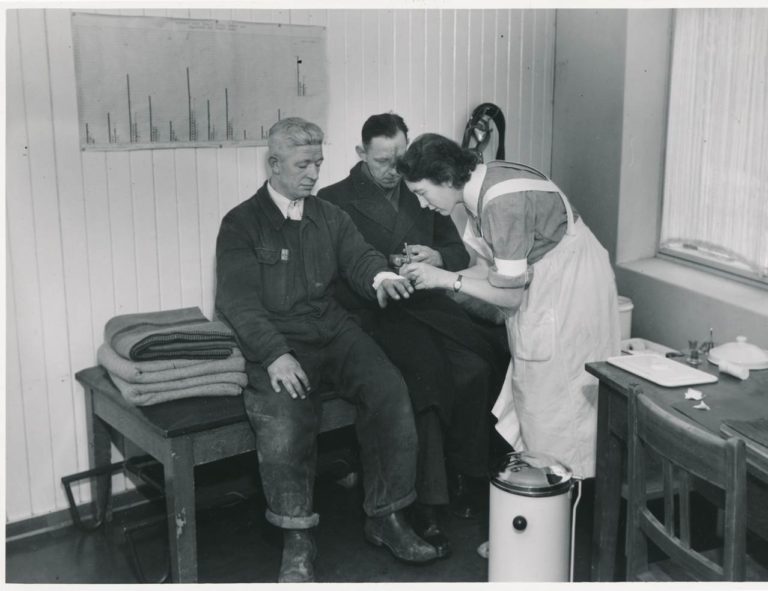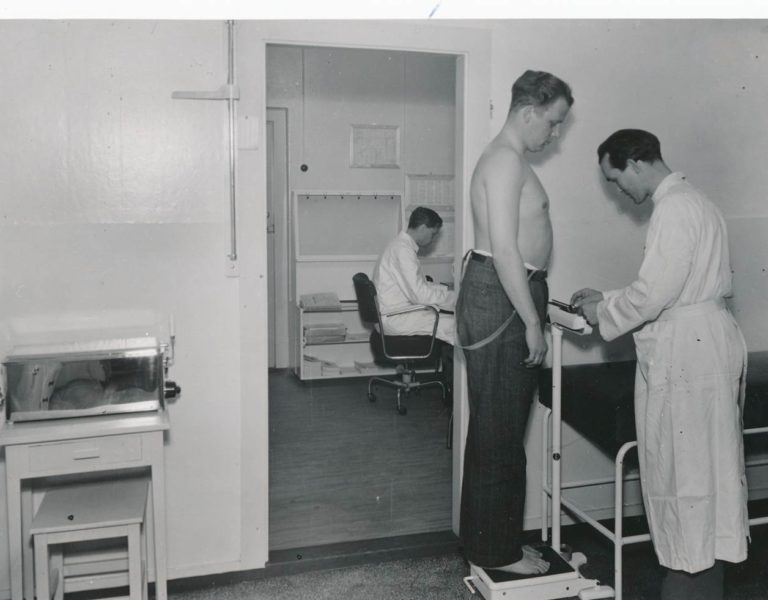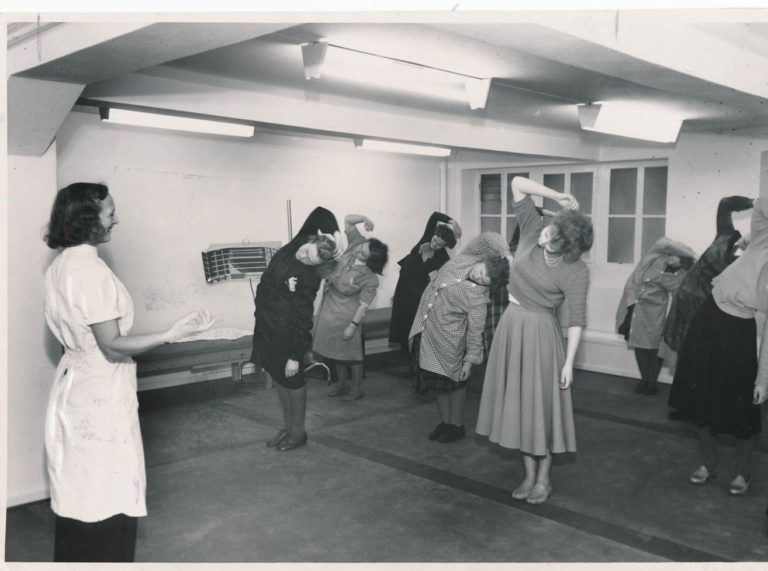Home / Business & Management / HR / Occupational Health in Developing Countries / Occupational Health Services in Norway
This article is from the free online
Occupational Health in Developing Countries


Reach your personal and professional goals
Unlock access to hundreds of expert online courses and degrees from top universities and educators to gain accredited qualifications and professional CV-building certificates.
Join over 18 million learners to launch, switch or build upon your career, all at your own pace, across a wide range of topic areas.

 An occupational nurse taking care of a worker who has cut himself. This is a typical type of curative work in occupational health units © Ø. Larsen
An occupational nurse taking care of a worker who has cut himself. This is a typical type of curative work in occupational health units © Ø. Larsen When occupational physicians started to perform preventive work, not only health aspects related to the work situation was in focus. Some factories had programs to improve the general health of the workers. Low weight posed an extra risk of developing tuberculosis, and therefore, checking the weight of the workers was important, like you see on this photo. © Ø. Larsen
When occupational physicians started to perform preventive work, not only health aspects related to the work situation was in focus. Some factories had programs to improve the general health of the workers. Low weight posed an extra risk of developing tuberculosis, and therefore, checking the weight of the workers was important, like you see on this photo. © Ø. Larsen The first Norwegian occupational physicians were particularly interested in work-related diseases, such as lung diseases and hearing deficits. Here, the physician to the left is working with an x-ray machine to examine the lungs, and the one to the right is cleaning the ears of a worker before testing the hearing © Ø. Larsen
The first Norwegian occupational physicians were particularly interested in work-related diseases, such as lung diseases and hearing deficits. Here, the physician to the left is working with an x-ray machine to examine the lungs, and the one to the right is cleaning the ears of a worker before testing the hearing © Ø. Larsen Physiotherapists had sessions with physical exercise for the workers in some factories, to reduce the risk of developing musculoskeletal diseases. Such programs were developed in the multidisciplinary teams in the occupational health units. © Ø. Larsen
Physiotherapists had sessions with physical exercise for the workers in some factories, to reduce the risk of developing musculoskeletal diseases. Such programs were developed in the multidisciplinary teams in the occupational health units. © Ø. Larsen





